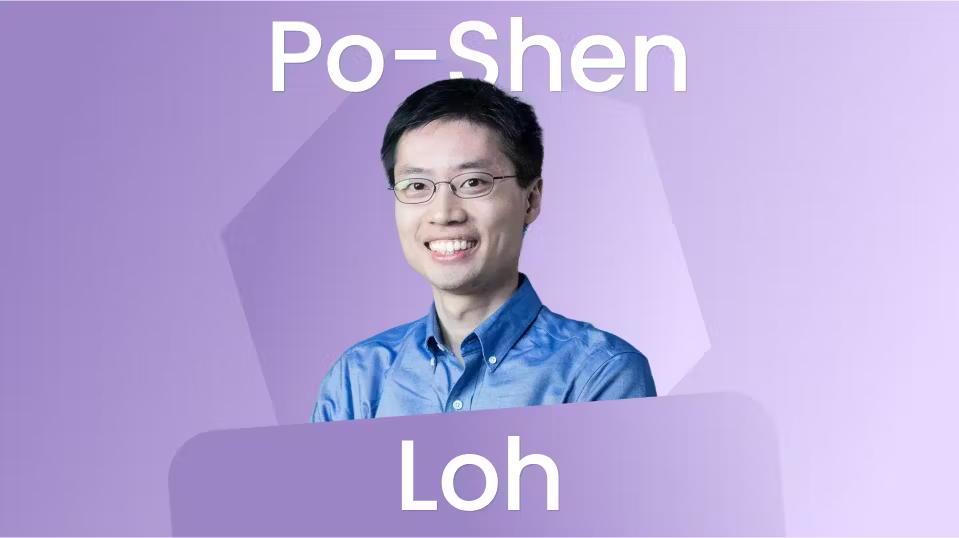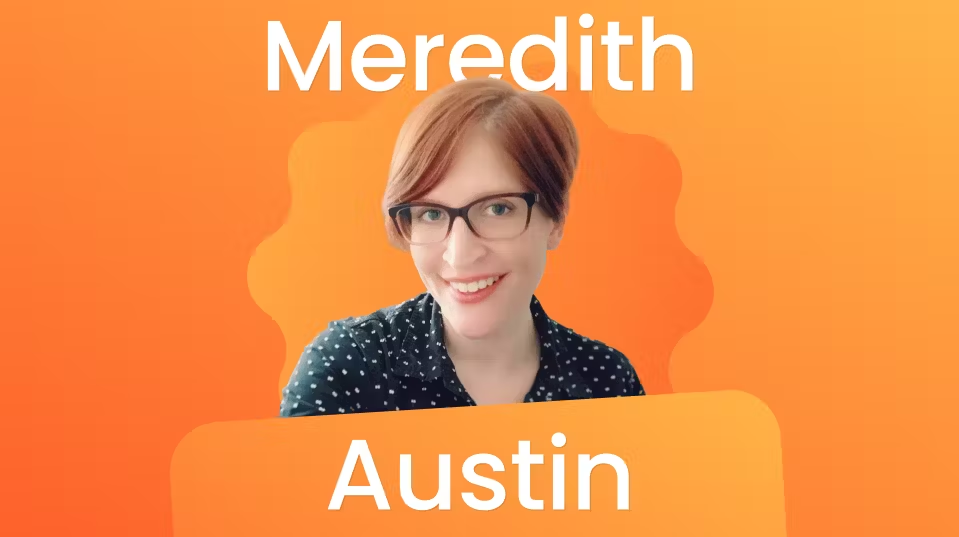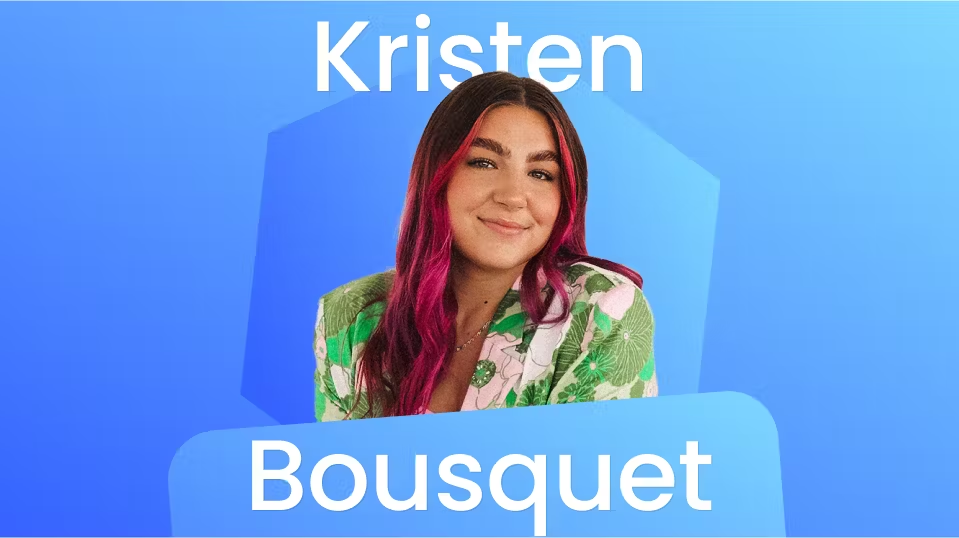How Po-Shen Loh Is Changing The Way People Think About Math

At a time when the explosion of artificial intelligence is dominating headlines, Po-Shen Loh is on a mission to help humans become as innovative and creative as possible. “AI is about to take away 70% of the jobs out there,” he says. “Since it’s getting so strong, we need to help humans become more intelligent.”
He believes that one way to do so is by becoming proficient in math.
Contrary to popular belief, Loh thinks that math can be fun, engaging, and yes, even creative.
As a mathematician, social entrepreneur, national coach of the US International Math Olympiad team, and Carnegie Mellon University professor, Loh is passionate about changing the way people think about math. He does so through his LIVE Thinkific courses, each of which are designed for middle school students and taught by high school math geniuses.
His team doesn’t just teach people how to do problems and memorize formulas; it teaches people how to look at something they’ve never done before and come up with their own creative way to do it – a skill that Loh says computers still cannot do.
“A lot of people don’t think of math as a creative subject because they’re used to a learning style where someone just shows them how to use a certain method. We give people questions that are very unusual. And because they’re so unusual, they cause the students to come up with their own way to solve them. For many students, this is a breath of fresh air.”
Perhaps his biggest accomplishment is the way in which Loh has created the first educational ecosystem of its kind. “We don’t rest until we make not only the best thing in the world, but the only thing in the world in our category,” says Loh.
As a successful online course creator, Loh shares his journey of creating a sought-after, one-of-a-kind online program. Here’s how he did it:
He scaled his teaching through online courses
Before Loh began teaching online, he taught math in-person and would travel around the country giving math talks. “I would often tell people during these talks, ‘You should learn math in a creative way,” he explains. “People would ask, ‘How can I actually do that?’”
These conversations spurred him to think about how he could scale his teaching in order to reach more people. He started looking at e-learning platforms where he could teach math in a creative way through high-quality videos. “Everyone’s time is valuable. I knew if I was going to teach online, I wanted to do it at the highest quality possible,” he says.
When Loh found Thinkific, he knew it would be the right platform.
“We wanted to have a premium feel, and we felt that we could do so with Thinkific.”
He pivoted from pre-recorded to live courses
In 2019, Loh launched pre-recorded Thinkific math courses called The Daily Challenge (read more about them here!), which are designed for the top 10% of sixth to eighth grade students.
During the emergence of COVID-19, more and more people were looking for online classes, and over 2,500 students signed up. Loh expanded to offering Mock Tests and Diagnostic Exams and a self-paced Daily Workout.
Loh used the revenue to continue improving his digital products and overall experience. When the pandemic started to wane, there was more pressure to compete with in-person learning. He decided to launch LIVE courses, as he believes that a live format allows for the best possible learning experience and has a similar impact as in-person education.
“The best way to learn mathematics is to have students voice their ideas and get feedback from the instructors. This lets students learn how to best use their ideas to solve problems.”
Now, his LIVE offerings have six modules – each with 20 classes — and every module progresses into the next. Every livestreamed class is 60-90 minutes long, with about 30 people in each. Further, the modules contain over 150 specially-crafted problems that teach math concepts. Since first launching in 2019, over 10,983 students have signed up in more than 30 countries across the world.
He combined math with performing arts

Loh’s LIVE classes aren’t just your typical Zoom classes; they’re highly engaging.
Each class is taught by two high school math geniuses who have been trained in performing arts in order to make the content (and overall learning experience) dynamic and entertaining. “The heart of our class is about a hybridization between insanely good mathematics and high-end performing arts,” says Loh. “We bring both ends together because that’s part of the experience. No one’s ever done this before.”
Other audiences are starting to be attracted to the classes, too; some 30 year-olds are wanting to re-skill, and kindergarten and first grade teachers are wanting to learn how to teach math in a more creative way. Additionally, the classes incorporate math videos taught by Loh. Once the high school facilitators go over a math problem in real-time, they will say, “Professor Loh, how did you solve this problem?” and the class will cut to a video of Loh working on the same problem – as if he has shown up to the class in real-time.
He created an engaging experience
In each LIVE class, there’s a third and fourth person (with their cameras off) from his staff; one who engages with students via text to answer their questions, and another who is a drama coach and provides feedback to the instructors afterwards so that they can constantly improve their presentation skills.
As a way to create deeper engagement, Loh leveraged his software engineering background to build technology – similar to an Instagram live feed – into the classes. This allows students to type something into the chat, which then goes into a moderation queue and, if approved, shows up on the screen where everyone can read it.
He helped teachers further develop their skills

His team is invested in developing their high school-aged math teachers; in fact, Loh thought of the idea to incorporate performing arts training so that the teens could build their interpersonal skills. “After coaching the US math team, I saw that the smartest people in math were having enormous difficulty getting into the most prestigious universities,” explains Loh. “By helping to build their personalities, this can help their chances at succeeding.”
Loh says that he doesn’t see the young math teachers as part of the labor force; rather, he sees them as his kids – and treats them as such. “This experience is fundamentally and intrinsically beneficial to each teacher,” he says.
According to Loh, the middle school students are able to resonate with the high school-aged math teachers, since they’re so close in age. This provides an overall rich learning experience, since there’s a sense of camaraderie and relatability between the teachers and students.
He offered a unique website experience
Once people visit his live course website, they get the impression that Loh is doing something different. “The website doesn’t look like your typical online learning page, and this was on purpose,” he says.
Loh coded the website himself. Here, prospective students have the opportunity to do a class demo or go to an information session to learn more before signing up. Plus, they can read about the student teachers – many of which are winners of national and state math competitions.
After scrolling the site, there’s a pop-up that asks people for their emails. In exchange, they get a $20 coupon for a math course.
He leveraged word-of-mouth marketing

Despite his tech-savvy site, most of Loh’s students find his classes through word-of-mouth.
When Loh isn’t teaching math at Carnegie Mellon University, he tours around the country giving math talks. Sometimes, over 100 people show up. “I’m always itching to get back on the road and start covering city after city after city,” he says.
Loh also has a marketing team, which helps him to get the word out and attract potential students.
He used an accessible pricing model
Each LIVE course costs $399, and includes 20 hours of instruction. To collect payments, he uses Thinkific’s PayPal and Stripe integrations.
Loh firmly believes in using an accessible pricing model. “The market price is just a little over $20 USD per hour. We charge the exact same, and our product is far superior,” he explains.
To make his products even more affordable, he uses Thinkific’s bundle feature to group similar products together at a discounted rate. “I’m not here to make fast money,” he continues. “This price is enough for us to be able to do what we’re doing. We’re not extraordinarily profitable, but at the same time, maybe we don’t have to be.”
Once the middle school students go through all six modules, there’s no upsell.
“I’m not just a businessman. I don’t want students to become addicted to my courses. My courses are designed so that students never have to pay anyone for math courses again.”
He contributed to social change

On top of offering accessible pricing, Loh has also started to run a scholarship program to provide learning opportunities for underprivileged students.
He visits inner city schools to find students who want to pursue math, but don’t have the resources to do so. “There are quite a few people who have an incredible amount of motivation but are stuck,” he explains.
The goal: improve access to opportunity by helping students excel in math and eventually get scholarships to colleges.
“This is a potential way to help address the large diversity, equity, and inclusion gap in the US. We’re trying to lay down paths in all of these different zip codes.”
He did everything at the highest possible quality
Loh’s main advice to course creators? Put the necessary amount of effort in to run your online program at the highest possible quality. “You need to make sure that you’re doing everything at the highest level,” he says. “Don’t make something for the sake of making something. Make the best.”
To do so, he recommends that online creators hone in on what differentiates them from others. “The key to your success is what makes you different,” adds Loh. “This isn’t just for online courses; this is for any business and anyone who wants to be an influencer.”
Ready to stand out amongst the crowd? Turn your knowledge into a business today. Start your free Thinkific trial today!
See related Case Studies
-

How Academity’s 12,000-Strong Community is Broadening the Definition of Gifted Education
Read more: How Academity’s 12,000-Strong Community is Broadening the Definition of Gifted EducationLearn how Texas teacher Meredith Austin developed an online education program empowering teachers nationwide.
-

How Storytelling Collective is Helping 12,000 RPG-Writers Unlock Their Creative Process
Read more: How Storytelling Collective is Helping 12,000 RPG-Writers Unlock Their Creative ProcessAshley Warren fell in love with stories when she was a little girl. Whether she was submitting fictional tales to her local library competition or
-

How Kristen Bousquet Helps Her (150+) Members Monetize
Read more: How Kristen Bousquet Helps Her (150+) Members MonetizeFind out how Kristen Bousquet earns more than $4,000 USD in monthly recurring revenue thanks to courses and memberships.
